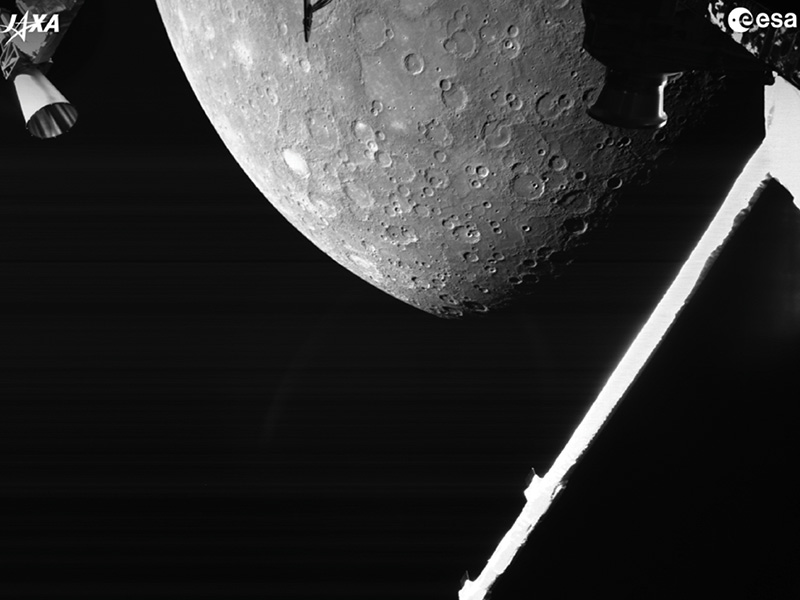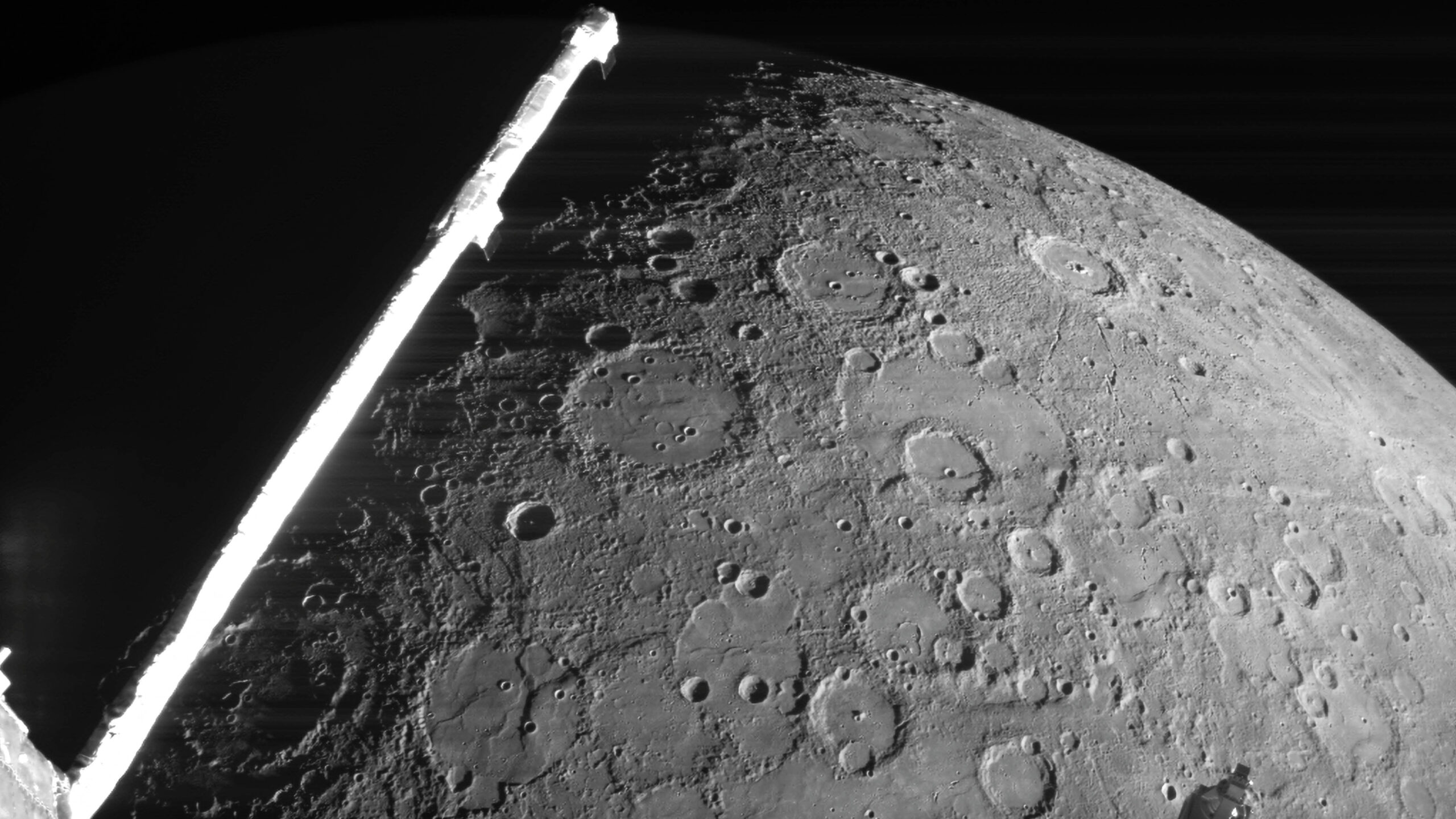The BepiColombo probe, a joint European-Japanese mission en route to Mercury, conducted its third close flyby of the planet. This flyby provided new insights into Mercury’s surface, revealing a multitude of craters and geological features.
One noteworthy crater discovered during the flyby was named Edna Manley, in honor of a Jamaican/British artist. The probe’s scientists took advantage of the opportunity to take measurements and capture images of the planet’s charred surface. BepiColombo, which began its mission in 2018, has been traveling through the inner solar system for seven years. To navigate its journey from the sun’s orbit to Mercury, scheduled for late 2025, the probe relies on gravitational assistance from Earth, Venus, and Mercury itself.

The recent flyby involved flying just 150 miles (236 km) above Mercury’s surface, allowing for close-up observations. The European Space Agency (ESA) unveiled the first set of images captured during the flyby, showcasing an abundance of craters, volcanic ridges, and lava flows on Mercury’s surface. The discovery of dark “low-reflectance material” within the Edna Manley crater suggests the presence of Mercury’s early carbon-rich crust, sparking interest among BepiColombo scientists. The photos also revealed the Beagle Rupes escarpment, a 370-mile (600-kilometer) long cliff formed billions of years ago as Mercury cooled and contracted.

Comparisons between the images obtained by BepiColombo and NASA’s Messenger mission, which orbited Mercury from 2011 to 2015, are eagerly anticipated by scientists. The photographs further display old impact basins that were filled with volcanic lavas during the planet’s tectonically active phase in its first billion years.
While the probe was unable to capture pictures during its closest approach due to approaching from the night side, images were taken approximately 20 minutes later from a distance of 2,170 miles (3,500 km). The BepiColombo mission consists of two orbiters stacked on top of each other, concealing several instruments, including the primary high-resolution cameras.
Instead, the probe utilized three monitoring cameras with a resolution of 1024 x 1024 pixels to send postcards back to Earth throughout its journey, including from previous flybys of Mercury, Venus, and Earth. The BepiColombo mission will undergo three more flybys of Mercury in the coming years before finally settling into orbit around the planet in December 2025. These upcoming flybys will contribute to a deeper understanding of Mercury’s geology and tectonic history.
- Misleading Video Alters Prime Minister Shehbaz’s Speech Targeting Political Rival, Not His Party - 21/04/2024
- ATC Grants Three-Day Remand for Suspects in Ichhra Bazaar Harassment Case - 19/03/2024
- Pakistan, India, and Bangladesh Lead World in Severe Smog Crisis, Exceeding WHO Guidelines - 19/03/2024


